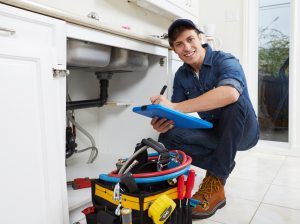- Declutter regularly to keep your home organized and teach your children about simplicity and generosity.
- Create a flexible living space by using multi-functional furniture, utilizing vertical space, incorporating mobile furniture, and designating multipurpose rooms.
- Prioritize safety by securing furniture, checking detectors and having appropriate childproofing measures.
- Keep up regular maintenance tasks and consider setting up a home maintenance savings fund.
- Hire professional residential cleaning services for deep cleaning and more time with your family.
As your family grows, your home naturally becomes a hive of activity and, often, clutter. Keeping up with the expanding needs while maintaining a tidy, functional, and welcoming environment can be a balancing act. Here are five essential tips to help you keep your home in top shape, ensuring it’s a safe and comfortable place for every family member.
1. Declutter Regularly
With children in the home, toys and clothes can quickly accumulate and take over your space. Take the time to sort through items every few months. Keep what you need and love, and donate or sell what you no longer use. This not only clears your space but also teaches your children about the value of simplicity and generosity.
Think vertically when it comes to storage. Shelves and tall cabinets take advantage of vertical space, making more room for play and daily activities. Clear, labeled bins on shelves make it easy to find what you need and make cleanup quick and straightforward, especially for kids.
2. Create a Flexible Living Space

Your living space needs to be adaptable to accommodate the changes that an expanding family brings. As your family grows, these spaces can evolve to suit your changing needs.
Here are some tips on how to create a flexible living space:
Multi-functional Furniture
Investing in multi-functional furniture is key to creating a flexible living space. Look for pieces that can serve dual purposes, such as a coffee table with hidden storage or a dining table that can also be used as a work desk. This will not only save space but also provide more options for different activities.
Use Vertical Space
When your living space is limited, make use of vertical space. Install shelves or cabinets on the walls to store items that are not frequently used. You can also utilize the space under your bed or invest in furniture with built-in storage options.
Mobile Furniture
Another way to create a flexible living space is by using mobile furniture. This type of furniture can easily be moved around and repositioned to suit your needs. For example, a moveable kitchen island can be used for cooking, dining or as additional counter space.
Multipurpose Rooms
If you have limited rooms in your home, consider turning one room into a multipurpose space. This could be a playroom/guest room or a home office/gym combo. Use furniture that can easily be stored away when not in use, such as foldable desks or Murphy beds. This way, you can make the most of your space without sacrificing functionality.
3. Safety First
With a bustling household, safety is paramount. Secure furniture to walls to prevent tipping, especially if you have climbers or are expecting a new baby who will eventually be exploring. Check that your smoke and carbon monoxide detectors are in working order and have a fire extinguisher on every floor.
Don’t overlook the small things—safety gates, corner protectors for sharp furniture, and childproof locks can prevent many accidents. Regularly walk through your home with a critical eye for potential hazards, especially as your kids grow and their abilities change.
4. Keep Up with Regular Maintenance

A well-maintained home is a safe and happy one. Create a checklist of annual tasks, such as clearing gutters, servicing heating and cooling systems, and checking the roof. Address repairs promptly—a small issue can quickly become larger and more expensive.
Consider setting up a home maintenance savings fund. Regularly contributing a small amount can take the sting out of unexpected repairs. Teach your kids the importance of caring for their home by involving them in age-appropriate maintenance tasks.
5. Enlist Help When Needed
Sometimes, the best way to maintain a clean and orderly home is to admit you can’t do it alone. This is where professional residential cleaning services come into play. These services can be a godsend for a busy family, helping to tackle the deeper cleaning tasks that can be time-consuming and physically demanding.
Having a professional team come in even once a month can make a world of difference in maintaining the cleanliness of your home. It frees up your time to focus on spending it with your expanding family. It’s also a way to ensure areas that might get overlooked in the daily rush—like under the beds or behind appliances—are kept as clean and dust-free as the more visible areas.
In Summary
Maintaining your home for your expanding family is an ongoing process that requires planning, organization, and sometimes a little outside help. By decluttering, creating flexible living spaces, prioritizing safety, keeping up with maintenance, and enlisting professional cleaning help, you can provide a space that grows with your family’s needs. Remember, the goal is to create a home that feels both lived in and loved—a sanctuary for all the memories yet to come.






